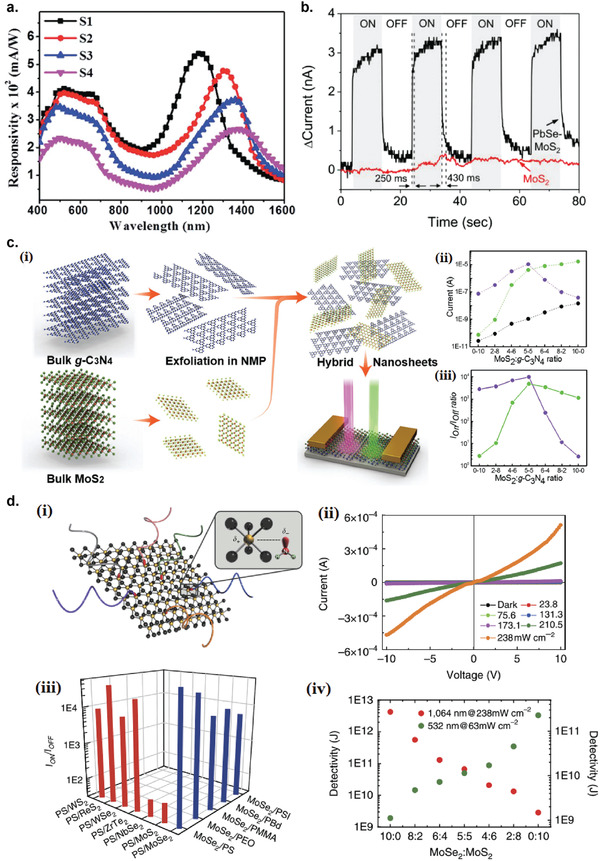Figure 23.

TMD hybrid photodetectors. a) Spectral responsivity of MoS2/PbS QD hybrid photodetector under an applied bias of 2 V and 100 mW illumination. S1–S4 refers to the hybrid heterostructure synthesized from the following lead acetate concentration: 1, 5, 10, and 25 mg in 50 mL of aqueous DMF solution. Reproduced with permission.[ 159 ] Copyright 2019, Royal Society of Chemistry. b) Photocurrent transients of MoS2/PbSe QD (black line) and MoS2 photodetectors. Reproduced with permission.[ 160 ] Copyright 2014, WILEY‐VCH. c) MoS2/g‐C3N4 hybrid photodetector on paper substrate. i) Schematic representation of preparation of MoS2 and g‐C3N4 hybrid dispersions and schematic illustration of the hybrid photodetector. ii) Dark (black) and photocurrent (532 nm‐green; 365 nm‐purple), and iii) ratios of the photocurrent to the dark current of the hybrid photodetector as a function of the composition of the MoS2 and g‐C3N4. Reproduced with permission.[ 161 ] Copyright 2017, WILEY‐VCH. d) TMD/polymer composite photodetectors. i) Schematic representation of hexagonal layers of transition metal atoms (M) sandwiched between two layers of chalcogenides (X) and the interaction between the lone electron pairs of nitrogen atoms of the amine‐terminated polymers and the electron‐accepting metal atoms of the TMD. ii) I–V characteristics of the composite MoSe2 photodetector in the dark and under different light intensities of NIR light at a wavelength of 1064 nm. iii) Ratios of the photocurrent to the dark current of the MoSe2 composites with different amine‐terminated polymers and the current ratios of various other TMD composites with PS‐NH2. iv) Detectivity as functions of the composition of the MoSe2 and MoS2 mixtures embedded in PS‐NH2 at wavelengths of 532 and 1064 nm. Reproduced with permission.[ 162 ] Copyright 2015, Springer Nature.
